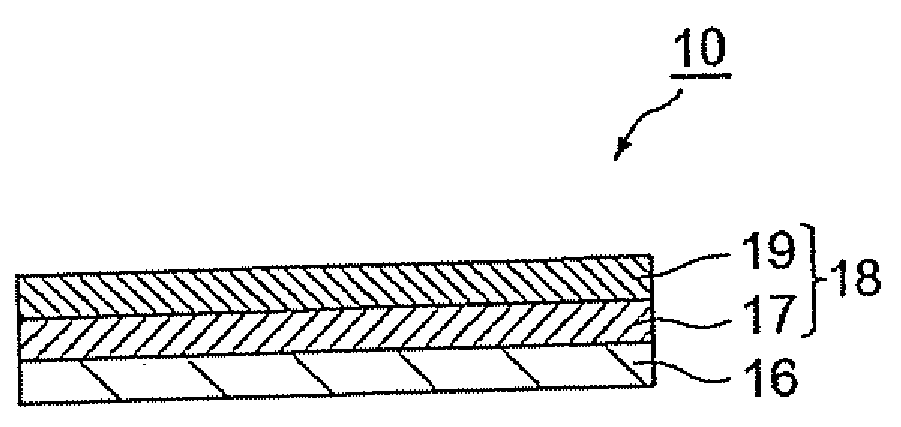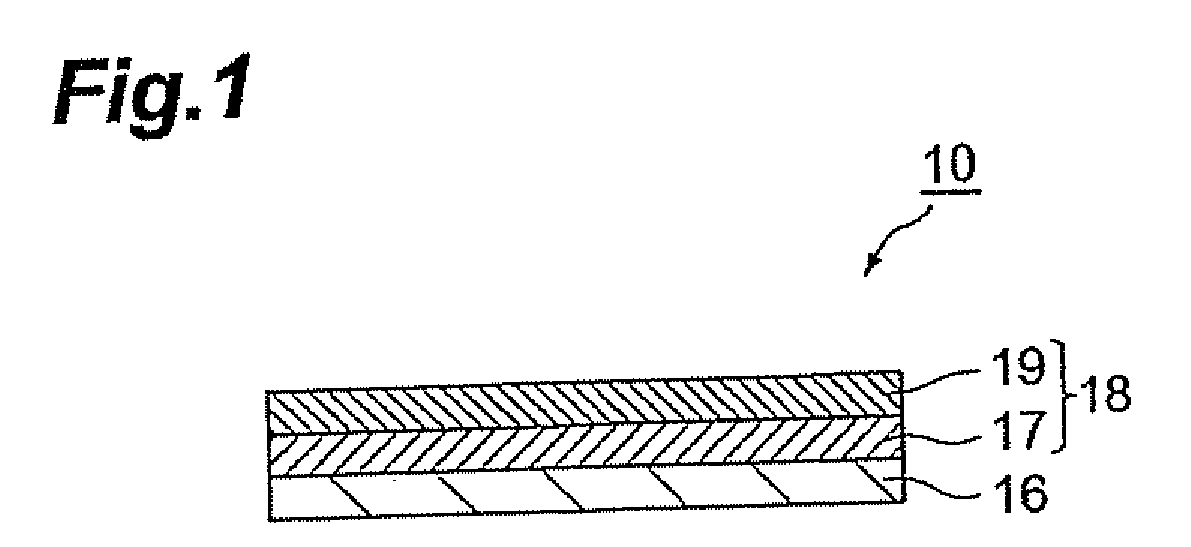Anode and lithium-ion secondary battery
a lithium-ion secondary battery and anode technology, applied in the field of anode and lithium-ion secondary batteries, can solve the problems of short circuit and raise the risk of ignition, and achieve the effects of adequate suppression of dendrite generation, excellent electric capacity, and sufficient safety
- Summary
- Abstract
- Description
- Claims
- Application Information
AI Technical Summary
Benefits of technology
Problems solved by technology
Method used
Image
Examples
example 1
[0094]90 parts by mass of graphite (average particle size: 24 μm) as an anode active material, 2 parts by mass of acetylene black as a conductive aid, and 8 parts by mass of polyvinylidene fluoride (PVdF) as a binder were mixed and dispersed with a planetary mixer and thereafter the viscosity of the mixture was adjusted with an appropriate amount of NMP to obtain a coating solution for formation of the lower layer in the form of a slurry.
[0095]The coating solution for formation of the lower layer thus obtained was applied onto a copper foil (15 μm) as a current collector by the doctor blade method so as to achieve an active material-supported amount of 10.5 mg / cm2, and was then dried. The resultant anode sheet was pressed by calendering under the linear pressure of 3432 N / cm (350 kgf / cm). This resulted in forming the lower layer on the current collector.
[0096]Furthermore, 90 parts by mass of graphite (average particle size: 14 μm) as an anode active material, 2 parts by mass of acet...
example 2
[0098]An anode was produced in the same manner as in Example 1, except that the linear pressure was 393 N / cm (40 kgf / cm) in the press by calendering of the anode sheet for formation of the outermost layer. In the anode sheet after the press, the thickness of the outermost layer was 20 μm and the thickness of the lower layer 63 μm.
example 3
[0099]An anode was produced in the same manner as in Example 1, except that the linear pressure was 2746 N / cm (280 kgf / cm) in the press by calendering of the anode sheet for formation of the outermost layer. In the anode sheet after the press, the thickness of the outermost layer was 16 μm and the thickness of the lower layer 61 μm.
PUM
| Property | Measurement | Unit |
|---|---|---|
| thickness | aaaaa | aaaaa |
| thickness | aaaaa | aaaaa |
| thickness | aaaaa | aaaaa |
Abstract
Description
Claims
Application Information
 Login to View More
Login to View More - R&D
- Intellectual Property
- Life Sciences
- Materials
- Tech Scout
- Unparalleled Data Quality
- Higher Quality Content
- 60% Fewer Hallucinations
Browse by: Latest US Patents, China's latest patents, Technical Efficacy Thesaurus, Application Domain, Technology Topic, Popular Technical Reports.
© 2025 PatSnap. All rights reserved.Legal|Privacy policy|Modern Slavery Act Transparency Statement|Sitemap|About US| Contact US: help@patsnap.com



